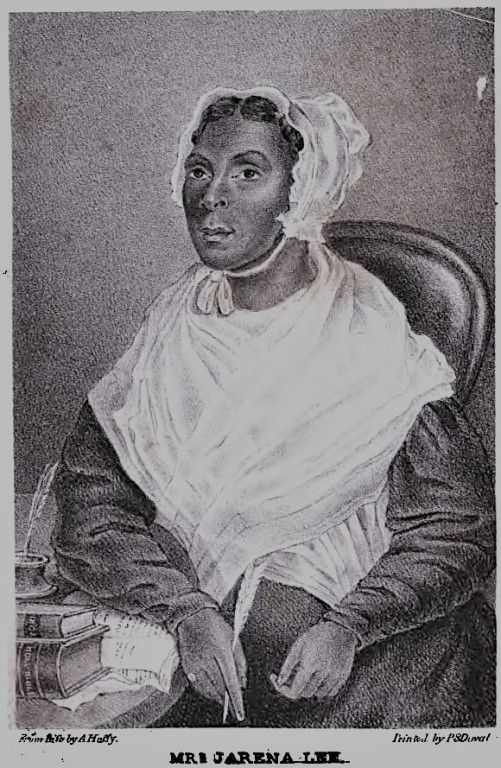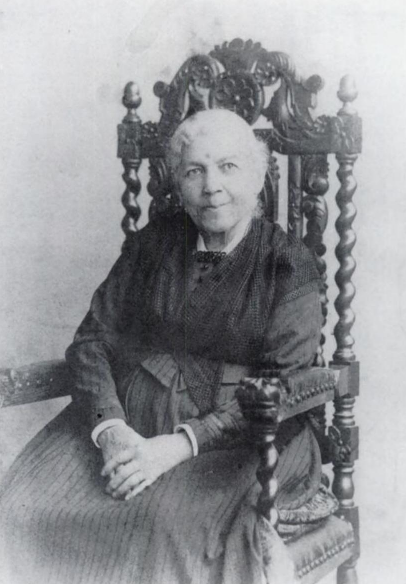
Shondaland
During the spring of 1848 in Hydesville, New York, sisters Kate and Maggie Fox shared a spectacular story with their neighbor, Mary Redfield. The girls’ tale of their own supernatural encounter left Redfield skeptical — until later that night, when she experienced it herself. That evening as Kate, 15, and Maggie, 12, prepared for bed, they heard rapping noises on the walls and furniture of their bedroom. Redfield, and the girls’ parents, confirmed what the young sisters had suspected: The raps were from the great beyond. From that day forward, the Fox sisters’ abilities — and the spirit that seemed to follow them, real or not — sparked an eruption of fascination and controversy among the journalists and pamphleteers of the era.
As news of the rapping noises spread, so did doubt. Yet, despite the public’s skepticism, the Fox sisters’ brush with the spirit world ushered in an era influenced by a movement that came to be known as Spiritualism. With a fervor reminiscent of the first and second Great Awakenings (two waves of evangelical religious revivals in the American colonies during the 17th and 18th centuries), Spiritualism’s popularity, especially among Quakers, abolitionists, and religious reformers, reflected a young American nation struggling to define itself. The practice urged Americans to look inward, encouraging them to grapple with the “what ifs” of eternity and the limitations of the mortal body. Through spirit channeling, automatic writing, Ouija boards, and séances, citizens peered into the Great Beyond in search of solace. Untethered from the limitations of patriarchal dominance, the body became a conduit capable of bridging the gap between the seen and unseen.
With the Fox sisters as its poster girls, Spiritualism quickly became an attraction for women of all races. No longer solely dependent on domestic work, men, or grueling shifts in the factories birthed by the Industrial Revolution, women gained mobility as trance lecturers, mediums, and prophets. By communing with the dead, women willing to reject unreformed, unenlightened modes of knowing — like canonical theology and patriarchal politics — became vessels capable of possessing the power of oration, foresight, and political influence. And though there were male spiritualists, women largely dominated the movement. Armed with the authority of their gifts these women practiced a new form of political resistance.
Untethered from the limitations of patriarchal dominance, the body became a conduit capable of bridging the gap between the seen and unseen.
Given its roots in resistance, it shouldn’t be surprising that many of Spiritualism’s most well-known practitioners were black women. Sojourner Truth (already renowned as an abolitionist and suffragist) became fascinated by Spiritualism around 1856, when she was invited by a radical Quaker sect, the Friends of Human Progress, to give a speech on abolition in Battle Creek, Michigan. Within a year, Truth moved to Michigan, purchasing a home in the nearby village of Harmonia, and joined the Battle Creek Spiritualist community in 1867.

1870: Former slave Sojourner Truth (1797 - 1883) became a campaigner for women’s rights and abolition. MPI/Getty Images
Historian Amy Lehman illustrates Truth’s influence by highlighting Cora LV Scott’s letter to Amy Post in the pages of her 2009 book “Victorian Women and the Theatre of Trance.” In it, Scott praised the power of Truth’s words with prophetic enthusiasm: “I cannot tell you the pleasure it gives me... to hear her talk — her words are like pearls cast from the crown of Truth — the world will long remember her when other names are forgotten.” The potency of Truth’s words stemmed from their authoritative immediacy, and her Spiritualism transformed her politics into something sacred. Her audiences were predominantly white, and thus possibly had limited expectations of Truth’s intellect, but nevertheless, audiences who witnessed Truth’s impassioned lectures — and the trancelike state into which she slipped while delivering them — were transfixed by her power.
Truth wasn’t the only black woman whose ability to speak to the dead amplified her message. Rebecca Cox Jackson, a free black woman born in Pennsylvania in 1795, began seeing visions as a child, and attributed her ability to read and write to the divine power of God. An influential Shaker and founder of her own Shaker community in Philadelphia, Jackson recounted her visions and mediumship in her autobiography, “Gifts of Power.” “For all these years, I have been under the tuition of invisible Spirits who communicate to me from day to day… By this [sic?] means I have been able to tell people’s thoughts and to tell them words they have spoken many miles distant from me. And also to tell them things they would do a year before hand…” Like Truth, Jackson used her abilities and influence to challenge institutional sexism and racism by cultivating spaces that centered black women, including a séance circle in her own home. Jackson’s ability to speak to the dead was an affirmation of both her devotion to God and her dedication to empowering her community.

Influential Shaker and lecturer, Rebecca Cox Jackson. PBS
Acts of storytelling and mediumship often coincided. Like Jackson, former slave Harriet Jacobs found power by channeling the voices of others. A year after the Fox Sisters became household names, Jacobs fled her abusive owner and relocated to Rochester, where she became friends with Amy Post. With Post’s encouragement, Jacobs became determined to tell her story, and the result was the 1861 publication of “Incidents in the “Life of a Slave Girl” (written under the pen name “Linda Brent.”) As Erin E. Forbes argues in her 2016 essay “Do Black Ghosts Matter?: Harriet Jacobs’ Spiritualism,” the autobiography is itself “a communication from the dead” that made the act of authorship synonymous with the “radical agency of the medium, who communicates as and for another.”

Spiritualist photos of the time would capture spirit ectoplasm leaving its hosts. Cabinet Magazine
Jacobs’ writing clearly pointed to the forces that haunted black Americans, and her experience as both an enslaved and free woman allowed her to give voice to the collective suffering — as well as the triumph — of her people. Like the billowing strands of ectoplasm captured in of the time, Jacobs’s words transformed the immaterial into something visible.
Another writer and medium, Harriet E. Wilson, channeled her consciousness into the fictive body of her novel’s heroine as a deliberate act of survival. Applauded in the 1867 edition of the “Banner of Light,” a Boston-based spiritualist newspaper, Wilson was regarded as a “trance speaker... soon [to] take high rank.” As her career flourished, Wilson’s experience with Spiritualism was initially defined by inclusion. In her eyes, the spiritualist community was, as her spiritualist colleague J.C. Street suggested, “non-sectarian” and free from the “unscrupulous rich [white] men” who impeded “spiritual progress.” As one of the first black women to publish a novel, Wilson’s 1859 narrative, “Our Nig: Sketches from the Life of a Free Black,” documented her experience as a woman of color, giving her the authority to bestow her own convictions on the novel’s protagonist Frado.

Author and abolitionist, Harriet Jacobs. Wikimedia Commons
Off the page, Wilson’s mediumship was equally powerful. She made her debut as a trance lecturer in Boston in the winter of 1876. Soon, she earned the billing “Mrs. Hattie E. Wilson: colored trance speaker,” a title that allowed her to occupy segregated intellectual and religious spaces. Wilson wasn’t as prominent as Sojourner Truth, but the Spiritualist lecture circuit gave her a platform to publicly campaign for women’s rights, abolition, and reform in education and labor. She was acknowledged by New England’s Spiritualist community, which kept her lectures well attended — and, eventually, enabled her to open a Spiritualist Sunday school in Boston, making her one of the few black women to teach at a private school at that time. Wilson’s clairvoyance transformed her own life as it shaped those around her; her voice shifted the experience of black womanhood from margin to center.
The words of women like Sojourner Truth, Rebecca Cox Jackson, Harriet Jacobs, and Harriet E. Wilson bridge the gap between the past and the present, just as their clairvoyance once let the living commune with their predecessors. Even now, hundreds of years after their passing, their wisdom rises from the page and their voices unveil the intangible. As Marjorie Pryse suggests in the introduction to 1985’s “Conjuring: Black Women, Fiction, and Literary Tradition,” “Black women writers affirm the wholeness and endurance of a vision that once articulated, can be shared — though its heritage, roots, survival, and intimate possession belong to Black women alone.”
The strong Spiritualist tradition lives on in the poetry of Lucille Clifton and Audre Lorde, the prose of Alice Walker and Toni Cade Bambara, and the foresight of Luisah Teish and The Hoodwitch’s Bri Luna. As if channeling a spirit that cannot be seen but can be felt and heard, all that they’ve conjured guides us forward. Their voices become the rappings on the wall, urging us to listen and speak.
Dianca London is the author of the forthcoming memoir “Planning for the Apocalypse: Meditations of Faith and Being the Only Black Girl at Your Party.” Her writing can be found in The Village Voice, Lenny Letter, the AV Club, The Toast, and The Establishment, among others.